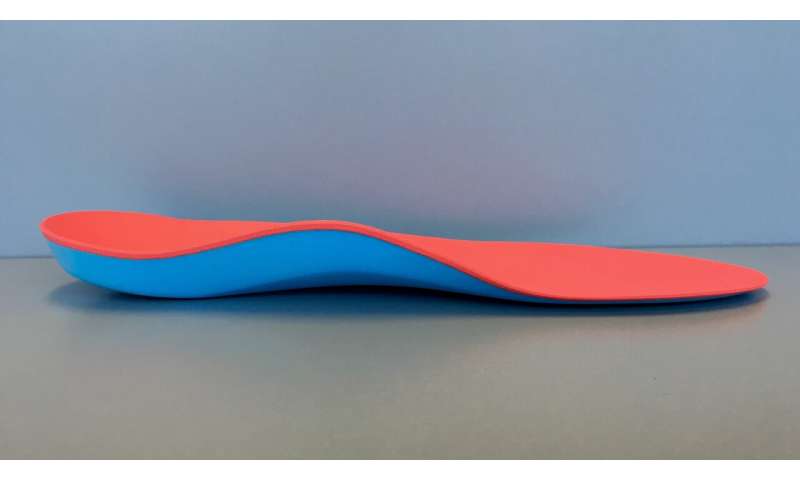Heel pain: To jab or not to jab?


New La Trobe University research has found cheaper orthotics might prevent the need for steroid injections for plantar fasciitis—a condition causing heel pain that affects one in 10 people aged over 50.
Lead Researcher and Associate Lecturer in Podiatry at La Trobe, Glen Whittaker, describes the plantar fascia as a thick band of fibrous tissue that connects the bottom of the heel to the forefoot.
“This tissue plays an important role during gait, and when damaged, can cause intense pain and limit function,” Mr Whittaker said.
“Plantar fasciitis can be season-ending for elite athletes, and we’ve seen it affect multiple AFL stars such as Carlton’s Marc Murphy, Geelong’s Harry Taylor, Melbourne’s Jack Viney, former St Kilda player Robert Harvey, and West Coast’s Josh Kennedy.”
In an aim to optimize plantar fascia pain management, La Trobe researchers compared the effectiveness of prefabricated orthotics and corticosteroid injections in 103 people—aged 21 to 72 years—with the condition.
“The surprising winner in the long term was the cheaper, less invasive option—orthotic shoe inserts,” Mr Whittaker said.
“While corticosteroid injections were more effective during the initial stages of treatment, participants found they had better long-term pain relief following 12 weeks of rehabilitation with appropriately contoured foot orthotics.”
Mr Whittaker said the study will give health professionals more confidence when creating treatment plans for patients with plantar fasciitis.
“Up until now, we’ve been unsure which treatment is more effective, and patients often view a steroid injection as a treatment that will ‘cure’ them of the pain,” Mr Whittaker said.
“This trial challenges that belief.”
Plantar fasciitis is also common in people who stand for long periods, and those who are overweight or pregnant.
Source: Read Full Article